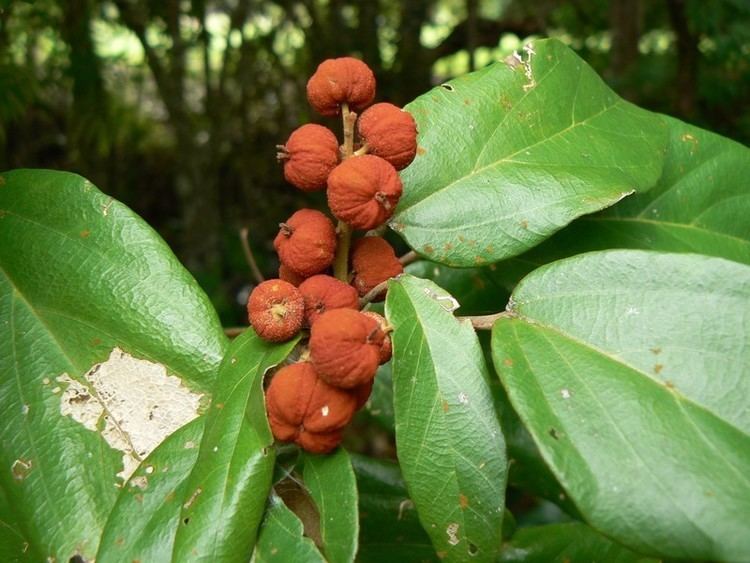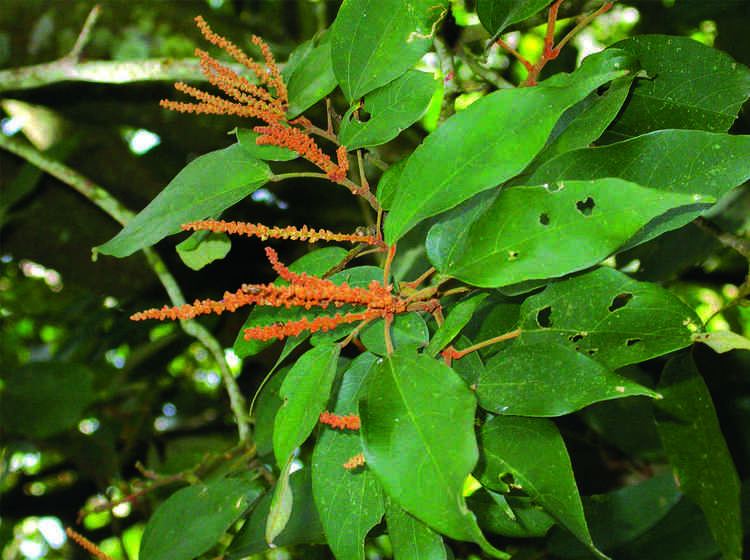Tribe Acalypheae | Subfamily Acalyphoideae Genus Mallotus Rank Species | |
 | ||
Similar Mallotus, Mallotus paniculatus, Macaranga, Macaranga tanarius, Glochidion | ||
Rohini or mallotus philippensis tree in flower rajaji national park dehra dun
Mallotus philippensis is a plant in the spurge family. It is known as the kamala tree or red kamala or kumkum tree, due to the fruit covering, which produces a red dye. However, it must be distinguished from kamala meaning "lotus" in many Indian languages, an unrelated plant, flower, and sometimes metonymic spiritual or artistic concept. Mallotus philippensis has many other local names. This kamala often appears in rainforest margins. Or in disturbed areas free from fire, in moderate to high rainfall areas.
Contents
- Rohini or mallotus philippensis tree in flower rajaji national park dehra dun
- Mallotus philippensis kamala tree red kamala kumkum tree
- Description
- Flowers fruit and regeneration
- Uses
- References

It occurs in south east Asia, as well as Afghanistan and Australia. The southern most limit of natural distribution is Mount Keira, south of Sydney. The species name refers to the type specimen being collected in the Philippines, where it is known as banato.

Mallotus philippensis kamala tree red kamala kumkum tree
Description

A bush to small or medium-sized tree, up to 25 metres tall and a trunk diameter of 40 cm. The trunk is fluted and irregular at the base. The grey bark is smooth, or with occasional wrinkles or corky bumps. Small branches are greyish brown in colour, with rusty covered small hairs towards the end. Leaf scars evident.

Leaves are opposite on the stem, ovate to oblong in shape. 4 to 12 cm long, 2 to 7 cm wide with a long pointed tip. The upper surface is green without hairs, the underside pale grey in colour. With a magnifying glass, small red glands may be visible. Leaf stems 2 to 5 cm long, somewhat thickened at both ends. The first leaf vein on either side of the mid rib extends from the leaf base, to over half the length of the leaf. Veins raised and evident under the leaf.
Flowers, fruit and regeneration
Yellow-brown flowers form on racemes. Racemes up to 6 cm long. Male and female flowers grow on separate trees. New South Wales flowering period is from June to November. Flowering period in the Philippines is March to April. Fruit may appear at any time of the year, three months or so after flowering. Usually a three lobed capsule, 6 to 9 mm broad, covered in red powdery substance. This is soluble in alcohol, which produces a golden red dye suited to colouring of silk and wool. One small black globular seed in each of the three parts of the capsule, seeds 2 to 3 mm in diameter.
Fresh seed is advised for germination.
It is a moderately growing tree.
Uses
Mallotus philippensis is used to produce red dye and herbal remedies. It produces rottlerin, a potent large conductance potassium channel opener.
